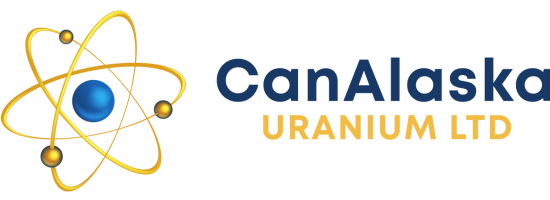Vancouver, Canada, April 22, 2015 – CanAlaska Uranium Ltd. (TSX-V: CVV; OTCQB: CVVUF; Frankfurt: DH7N) reports that uranium mineralization has been detected at the North West Manitoba project by drilling. A down hole gamma ray log of hole MG15DD-0012 has revealed highly anomalous responses attributable to uranium mineralization between 164 and 238 metres and between 285 and 347 metres. This is the first significant uranium mineralization to be identified at Maguire Lake
Operated by Northern Uranium that holds a 50% interest in the property, the latest drill program at Maguire Lake continues to intersect a substantial hydrothermal alteration zone, with multiple structures over a 100 metre width and 300 metre strike length characterized by intense clay-hematite alteration. Unconformity style uranium mineralization in the Athabasca Basin is associated with these hydrothermal alteration zones and fault structures.
Peter Dasler, President and CEO, CanAlaska, states, “The latest drill results are highly encouraging as they continue to confirm the geological model for uranium deposits. Additional drilling will enable initial drill-testing of multiple targets in search of high-grade uranium mineralization.”
Hole MG15DD-0012
Hole MG15DD-0012 has been through the central portion of a large ground gravity low with IP-resistivity conductive anomalies coincident with anomalous radon in water. The hole was drilled with large HQ core through ice at a bearing of 320 degrees and an inclination of 55 degrees. Bedrock was intersected at 26.1 metres and the hole continues to 350.35 metres. A down hole gamma ray log was completed and revealed highly anomalous responses attributable to uranium mineralization between 164 and 238 metres and again between 285 and 347 metres.
The first anomalous zone from 164 to 238 metres was hosted in sericite and clay altered calc-silicate, massive radioactive clay and radioactive granite bracketed by very strong clay alteration. The highest radioactive anomaly (approximately 55 times background) in this section is attributable to a 33cm silicified breccia with rounded granitic and exotic clasts cutting radioactive granite. This anomalous intersection is present within an extensive regional southwest to northeast trending steeply northwest dipping fault zone.
The second zone anomalous in uranium from 285 to 347 metres ranges to over 65 times background and is attributable to a pegmatitic dyke cutting unaltered pelite to a depth of 311 metres at which point massive unaltered pegmatite was intersected to the end of the anomalous zone at 347 metres. High-grade uranium mineralization could be situated above, below or along strike to the southwest or northeast of the first 164 to 238 metre uraniferous zone of hole MG15DD-0012 which encountered sericite and other clay alteration associated with a regional fault zone.
Hole MG15DD-0013
Hole MG15DD-0013 was collared along the strike of the fault zone 120 metres to the southwest of hole MG15DD-0012. It was drilled at the same 320 degree azimuth and 55 degree inclination and passed directly under vertical drill hole MG15DD-0011. The hole is located within the same 500 by 800 metre gravity low and was designed to test an IP and resistivity conductive anomaly at 100 metres depth and a strongly conductive anomaly at 150 metres depth.
Bedrock consisting of semipelite with pink granitic stringers was intersected at 51.2 metres depth and continued to the end of hole at 215 metres. The hole was ended early due to deteriorating ice conditions at the drill site. A down hole gamma ray log to 211 metres depth returned only weak radioactive spikes at 90 and 150 metres depth. The uranium mineralization intersected 120 metres to the northeast in hole MG15DD-0012 was far stronger. The presence of higher grade mineralization to the northeast is also supported by the recent RadonEx survey which provided infill coverage of this area and returned higher radon in water results to the northeast.
Hole MG15DD-0014
Drilling has now commenced on hole MG15DD-0014, located 120 metres along strike to the northeast from hole MG15DD-0012. This hole is targeting the center of the gravity low which was previously tested by vertical hole MG15DD-0009 which suffered from very poor core recovery and the hole was lost before a down hole gamma ray survey could be completed. In addition hole MG15DD-0014 targets a conductivity anomaly at 100 metres depth as well as the anomalous radon in water results returned from the recent infill RadonEx survey.
Summary
In addition to the very encouraging anomaly presently being drilled at least 4 additional lake targets and 7 additional land targets remain to be tested. These anomalies are based on the results of ground gravity, IP and resistivity surveys, airborne electromagnetic surveys, RadonEx radon in water surveys and AlphaTrack radon on land surveys. All of these targets are up-ice of uraniferous boulders (up to 66% U3O8) discovered in a prospecting program by CanAlaska geologists. To better define these targets an infill radon in water survey by RadonEx Exploration Management has been completed and a ground gravity survey has been completed in the field. The results from these surveys are presently being compiled. A second large diamond drill rig is presently being mobilized to the project to assist with drilling the lake and land targets.

Exploration Manager Bruce MacLachlan and senior geologist Daniel Rubiolo at lakeside alteration zone Maguire Lake.
Dr. Karl Schimann, PhD, P.Geo, is the qualified technical person responsible for this news release.
About CanAlaska Uranium
CanAlaska Uranium Ltd. (TSX-V: CVV; OTCQB: CVVUF; Frankfurt: DH7N) holds interests in approximately 770,000 hectares (1.9 million acres), one of the largest land positions in Canada’s Athabasca Basin region — the “Saudi Arabia of Uranium”. CanAlaska’s strategic holdings has attracted major international mining companies Mitsubishi, KORES and KEPCO as partners at its core projects. CanAlaska is positioned for discovery success in the world’s richest uranium district.
For more information visit www.canalaska.com
On behalf of the Board of Directors
“Peter Dasler”
Peter Dasler, P. Geo., President & CEO
Contact:
Peter Dasler, President and CEO.
Tel: +1.604.688.3211 x318
Email:
The TSX has not reviewed and does not accept responsibility for the adequacy or accuracy of this release: CUSIP# 13708P 10 2. This news release contains certain “Forward-Looking Statements” within the meaning of Section 21E of the United States Securities Exchange Act of 1934, as amended. All statements, other than statements of historical fact, included herein are forward-looking statements that involve various risks and uncertainties. There can be no assurance that such statements will prove to be accurate, and actual results and future events could differ materially from those anticipated in such statements. Important factors that could cause actual results to differ materially from the Company’s expectations are disclosed in the Company’s documents filed from time to time with the British Columbia Securities Commission and the United States Securities & Exchange Commission.

